- The Wipeout Weekly
- Posts
- 🏄♀️ Shoulder burn is a real pain 😖
🏄♀️ Shoulder burn is a real pain 😖
Plus: Corduroy waves, big wave history, weekly news & mellow Mollymook
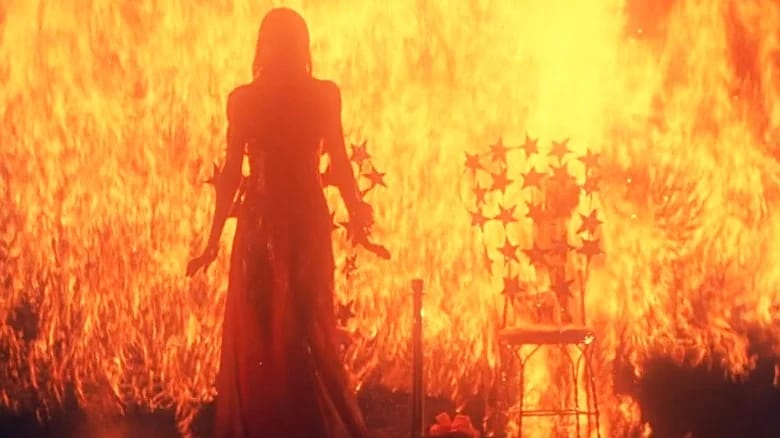
🌺 Aloha! This week, we’re reporting from the birthplace of modern surfing—Hawai’i. Unless, of course, you’re the mighty Felipe Pomar, who believes surfing was actually born in Peru.
🏄♀️ Let’s surf:
Shoulder burn is a real pain 😖
Mollymook, NSW is mellow, mostly 🌊💕
Big wave surfing before the 100 Foot Wave 🌊🌊🌊
Corduroy is for surfing, not for wearing 👖🌊
The news is good, mostly 🫠
SURFODRAMA
😱 Shoulder burn is a real pain 😖
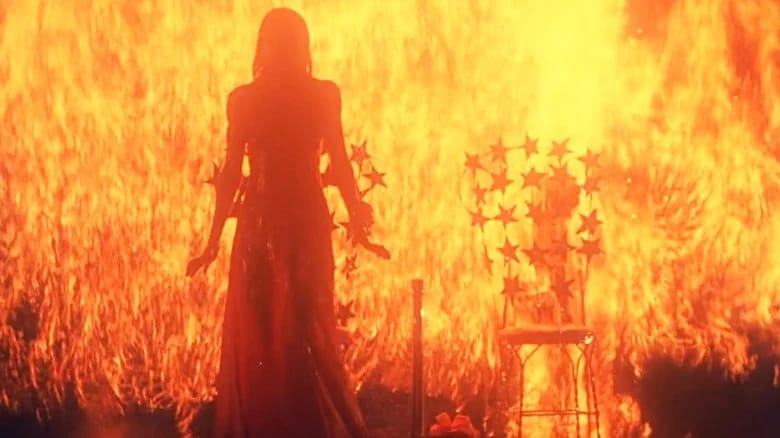
My local break has a rating of “medium” for shoulder burn according to Surfline, meaning it’s worse on bigger days requiring more effort to get into and stay in position. But there’s another way of looking at shoulder burn.
🔥 What shoulder burn feels like
Shoulder burn, it’s that feeling you get after a session, where some of it’s the good pain, hey-I’ve-exercised pain. And some of it is that kind of exhaustion that makes you rethink your life choices. Is surfing life?
No wonder I do want to know why surfing is so hard on our shoulders, how to tell the difference between normal fatigue and the start of something more doctor-visit-requiring serious, and what you can actually do to fix it—and prevent it in the first place.
🧠 Let’s start with why this happens
Surfers spend about 80% of their time paddling. And your shoulders are the most mobile joints in your body. They have this huge range of motion because they’re held together mainly by tendons instead of stronger ligaments. Great for mobility. Terrible for stability.
Over time, all that paddling creates an imbalance. Your internal rotators—muscles like your pecs—get super strong and tight. Meanwhile, the little stabilizer muscles in your upper back and rotator cuff get tired and weak.
And when that imbalance goes on too long, you get problems.
Over time, the little tendon in your rotator cuff can get pinched or inflamed. This is what people call “shoulder impingement.” It feels like a dull ache or a sharp pinch when you lift your arm or reach behind you. Sometimes it even sends pain down your arm.
If you ignore it, that swollen tendon starts to fray, and you end up with a partial or full rotator cuff tear. That’s when simple movements—like putting on a t-shirt—suddenly hurt like hell.
⚠️ When to worry
So how do you know if it’s just normal muscle fatigue or something more serious? Here are a few red flags to watch for:
Pain that’s sharp or stabbing, especially when you lift your arm overhead.
A feeling like your shoulder is weak or unstable.
Pain that doesn’t go away with rest.
Pain radiating down your arm to your elbow or hand.
Waking up at night because your shoulder hurts.
If you’ve got any of those, it’s time to see a doctor or physical therapist.
🛑 Resting isn’t enough
Here’s something a lot of people do get wrong though: they rest for a month and expect their shoulder to magically heal.
The problem? Resting too long causes your muscles to weaken and lose coordination. So when you go back to surfing, you’re even more likely to get injured again.
Yes, you need to give your shoulder a break if it’s inflamed. But you also need targeted exercises to rebuild strength, balance, and mobility.
I read this somewhere, and I am totally stealing it—shoulder pain is the price of admission in surfing. Shoulders take a beating from all the paddling, pop-ups, and throwing the board over the top of whitewater. But that doesn’t mean you have to accept chronic pain as part of the deal.
If you pay attention to your body, build strength in the right places, and modify your technique, you can surf longer and hurt less.
And remember—rest is good, but smart, active recovery is better.
SURF SPOT SPOTLIGHT
Mollymook, NSW is mellow, mostly 😜
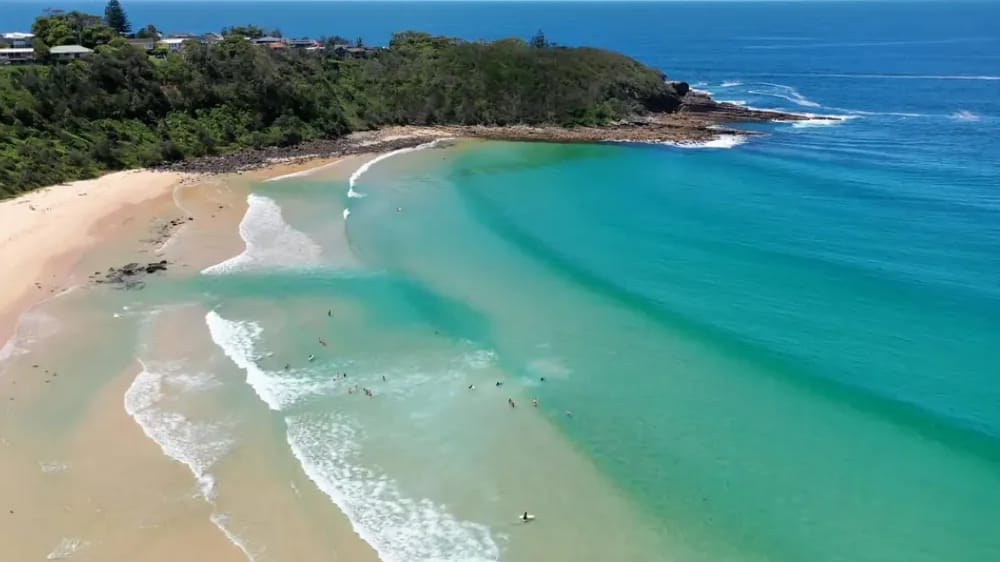
Dreaming of rolling beach breaks, easy vibes, and a classic Aussie surf town without the Sydney crowds? Welcome to Mollymook—a gem on the New South Wales South Coast that’s perfect for beginners looking to catch their first green waves.
Mollymook is about a 3-hour drive south of Sydney, tucked near Ulladulla. The main beach stretches for about 2 kilometers and has a little something for everyone—mellow peaks for learners, more punchy sections for progression, and some reef options if you’re feeling spicy (but we’ll stick to the beginner zones for now).
🌊 The surf
Mollymook Beach is a classic east-facing beach break with a sandy bottom and multiple peaks. The southern corner (near the Surf Life Saving Club) is the best place for beginners—waves are smaller, protected from big southerly swells, and break in deeper water.
The middle and northern sections can get steeper and faster when the swell picks up, but on small days, you’ll find gentle, spilling waves perfect for your first proper rides.
Expect more power here than some sheltered Sydney beaches—so start on smaller days (knee to waist-high) if you’re new.
🚿 Water quality
Generally good, though like anywhere, heavy rain can bring some runoff. The South Coast is far less industrial than metro beaches, so the water here is often clean and clear.
👙 Wardrobe
Water temps in Mollymook vary a lot by season:
Summer (Dec–Feb): 20–23°C—springsuit or even just boardies and a rashie on hot days.
Autumn (Mar–May): 18–21°C—3/2
Winter (Jun–Aug): 15–18°C—3/2 or 4/3
Spring (Sep–Nov): 16–19°C—3/2
Bring sunscreen—Australia’s UV is no joke—and a good hat for pre-surf hangs.
☀️ Best time for beginners to go
Late summer to autumn (February–April) is prime: warm water, cleaner morning conditions, and more consistent small to medium swells. Winter sees bigger surf and chillier mornings, but you’ll also get uncrowded lineups.
⚠️ Hazards
Mollymook is mellow most days, but watch out for:
Rips: Especially toward the northern end—stick to the patrolled area near the surf club if you’re unsure.
Shorebreak: On big swells, the shorey can get heavy.
Crowds: Especially in summer holidays. Be patient and smile—it helps.
🏄 Rentals + lessons
Mollymook has a great surf school scene. Check out:
Mollymook Beach Surf School: Long-established, friendly instructors, all gear provided.
Pam Burridge Surf Schools: Yes, that Pam Burridge—former world champion. Runs lessons across the South Coast including Mollymook and Narrawallee.
Board rentals are available right by the surf club and local surf shops in Ulladulla.
🍉 When you’re not surfing
Grab a coffee or a killer breakfast at The Beach Hut Café overlooking the sand.
Stroll up to the headland for whale-spotting in season.
Swim in the Mollymook Ocean Pool at the southern end.
Explore Ulladulla’s harbour and weekend markets.
🧳 Solo friendly?
Totally. Mollymook is safe, relaxed, and welcoming. Plenty of accommodation from surf lodges to cute Airbnbs. It’s more laid-back than Byron or Bondi—expect a chilled-out country town vibe.
✅ Quick tip
If the main beach gets too big, try Narrawallee Beach just north—it’s often smaller and more beginner-friendly.
SURFING THRU HISTORY
Big wave surfing before the 100 Foot Wave 🌊
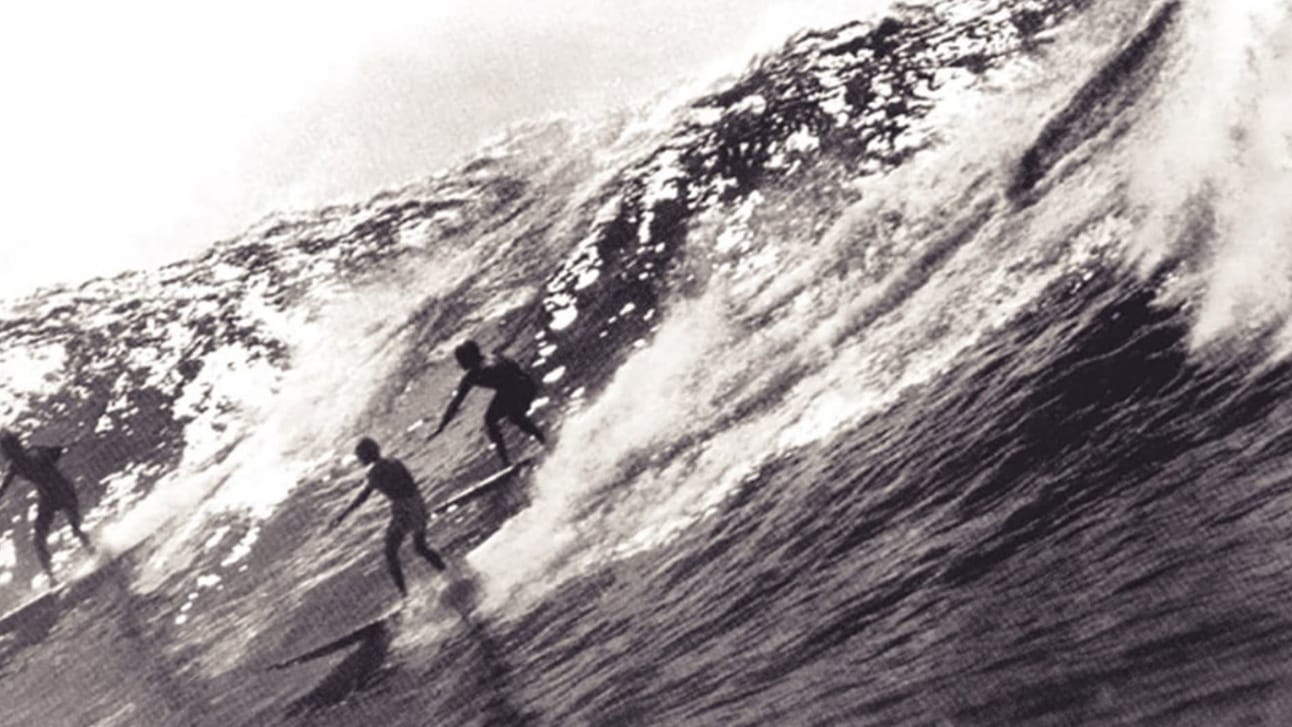
Everyone’s like: have you seen that the 100 Foot Wave got renewed for the fourth season?*
And I’m like: please. I’ve been all in on big wave surfing since I watched Riding Giants by Stacy Peralta in early 2000s.
I thought: if the big waves always existed, surely so must’ve big wave riding in the ancient Hawai‘i. On their big-ass olos.
However, it’s said that big wave surfing only began with the invention of a hot curl surfboard designed by John Kelly, Wally Froiseth, and Fran Heath in the late 1930s—a surfboard that allowed them to trim along big waves in a more controlled manner. And then the boys traveled to the North Shore of O‘ahu, discovered Makaha, and the rest is history.
📏 What even counts as a big wave?
I also assumed that there must be a clear, widely agreed-upon demarcation line on what constitutes a big wave versus a regular-sized one.
Apparently not. It’s somewhere between 15–18 feet. Is it on the Hawaiian scale? I’m really not into ambiguity. The Eddie—the Eddie Aikau competition—takes place when waves are at minimum 20 feet, so I’m going with that.
If you ever wondered why you don’t see more big wave riding being reported, it doesn’t happen that often, and when it happens, it’s usually in the winter.
🏄♂️ The early days at Makaha and beyond
Once Makaha became a big wave thing, and a pic of Buzzy Trent, George Downing, and Woody Brown appeared in the press in November 1953, things kinda snowballed.
Surfers from California began traveling to the North Shore on a regular basis, and Sunset Beach and Waimea Bay got discovered—ridden by the likes of striped-shorts-clad Greg Noll, filmed on celluloid and popularized across the USA and the world.
And that lasted until the very late ’60s, when Greg Noll dropped into a 35-foot wave at Makaha. Yes—dropped, not surfed. I do recommend watching Riding Giants for more on that story.
💤 The lull before the comeback
Then crickets for more than a decade, until Waimea started pumping big time, then Todos Santos in Baja, Mexico, and Mavericks became big wave surf spots.
You can hear more about Maverick’s in our pod titled: I Loved How You Almost Died at Maverick’s.
🚤 The tow-in revolution
In the early ’90s, Laird Hamilton (my hero), Buzzy Kerbox, and Darrick Doerner started dabbling with towing into the big surf using a Zodiac—it’s a kind of pontoon-type watercraft.
And tow-in surfing was born, now allowing surfers to tackle much larger waves of 30, 50 feet.
Laird started riding Pe‘ahi—that means Jaws—on Maui. And big wave surfing was back big time, with initiatives such as the search for a 100-foot wave, first by Billabong in 2001 and now by HBO with Garrett McNamara.
More on what to wear and how to survive a big wave wipeout coming soon, but for now I will leave you with this fact:
Despite the reports of a 108-foot wave ridden by Alessandro Slebir at Mavericks, the current official records for the biggest waves ever surfed are:
Sebastian Steudtner—86 foot (latest unofficial 93.5 foot)
Maya Gabeira—73.5 foot
Both at Praia de Norte, Nazaré.
*No news on if “100 Foot Wave” actually got renewed for S4.
WORD OF THE WEEK
Corduroy is for surfing, not for wearing 👖🏄🏻♀️
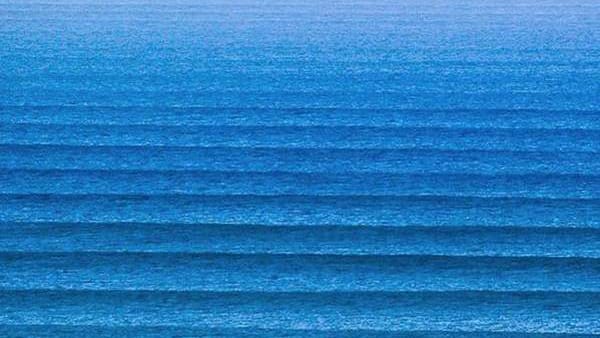
You do know what corduroy is, right? That thick cotton fabric with velvety ribs that used to be fashionable in the 1970s, worn by Eddie Vedder from Pearl Jam. And wait a minute… it’s making a strong comeback in 2025!
But to us, surfers? Corduroy means glory.
Because in surf lingo, corduroy is a description of numerous sets of waves about to make landfall, usually observed from a high vantage point. What you’re seeing is a dreamy pattern of long, evenly spaced swell lines stretching into the distance—rolling toward the shore in neat, organized rows. Like Eddie Vedder’s corduroy jacket, but better.
🌬️ What actually causes it?
Corduroy lines are caused by long-period, organized swell trains generated by powerful, distant storms—usually far out at sea.
When a storm system (like a cyclone or low-pressure front) blows strong winds over a large area of the ocean for an extended time, it creates swell. The bigger and longer the storm blows, the more energy is transferred into the water, producing long-period swells (think 13–20+ seconds between wave crests).
🌊 How swells turn into corduroy
As these swells travel thousands of miles across the ocean, they begin to organize:
The short, messy chop dies out.
The longer, more powerful waves separate into clean, even intervals.
They line up parallel to each other—creating the signature corduroy pattern surfers love.
This process is called wave dispersion, and it’s why the best surf often comes from storms that are hundreds (or thousands) of miles away. By the time those swell lines reach your local break, they’re polished, powerful, and corduroy-picture-perfect.
So if a mate asks: Did you see those corduroy lines?! Grab a board and go.
Also, Eddie Vedder is a pretty decent surfer. 🌊🤙
THE WIPEOUT WEEKLY SURF NEWS ROUNDUP
The news is good, mostly 🫠
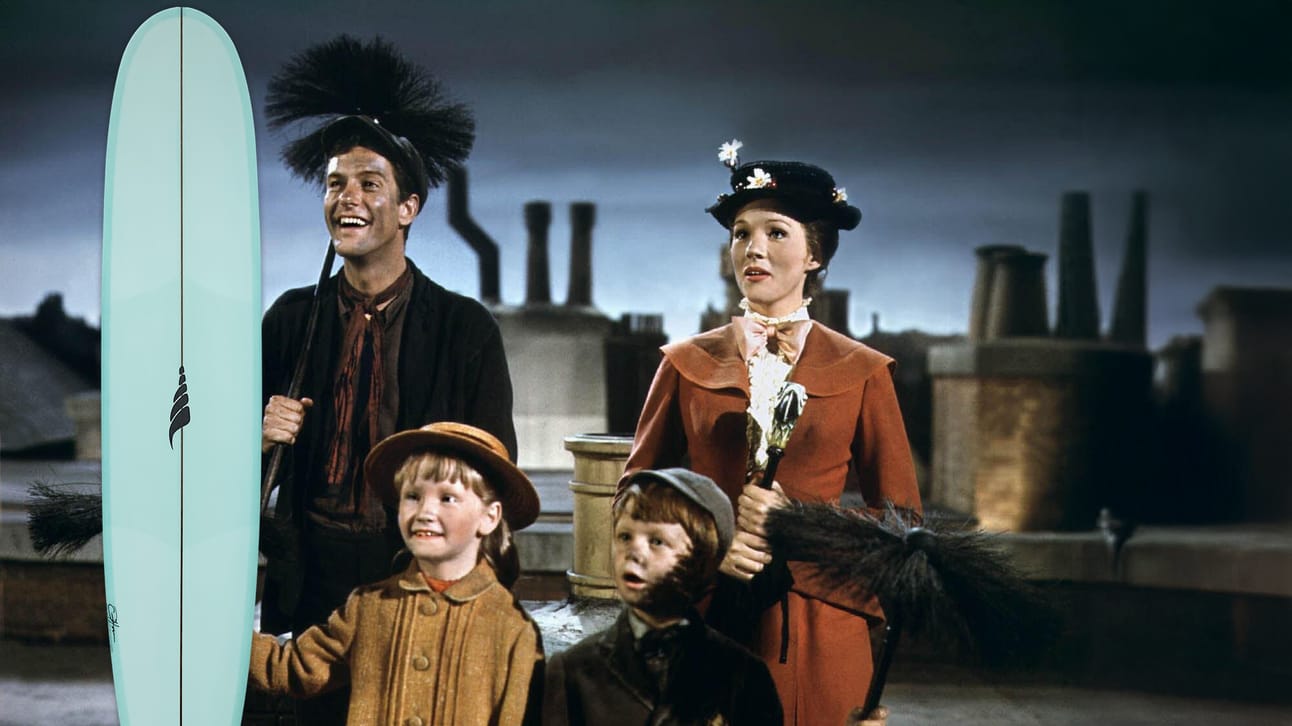
600 surfers celebrate Clyde Aikau in Waikiki
Fewer LA kids than usual in the water
That time Dick Van Dyke fell asleep on his surfboard
Get ready for a new wave pool in Texas
⬆️ Aaaaaaand that was the last wave of the week!
If a friend forwarded this and you liked it, hit subscribe & join us! We will see you all next week! 🌊
🏄 How was this week's edition of The Wipeout Weekly?Drop in with your pick 👇 |

Reply